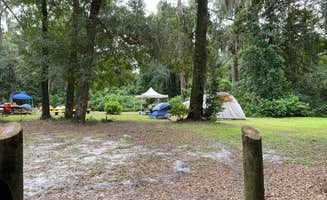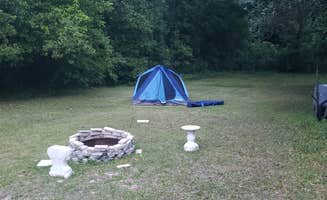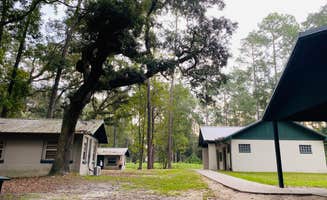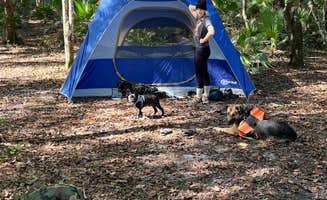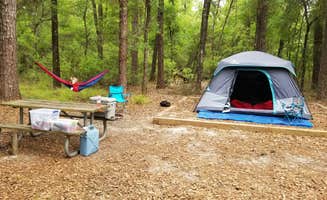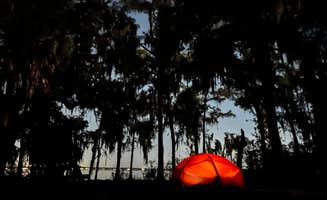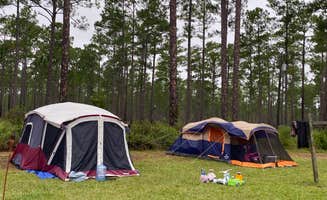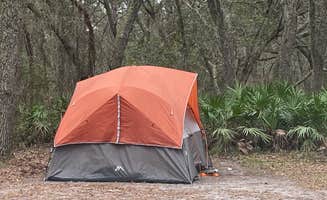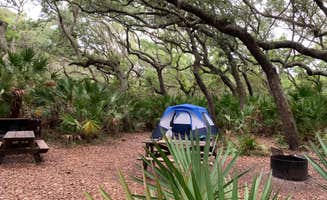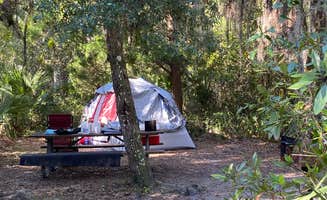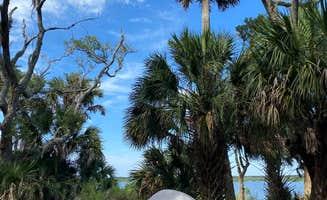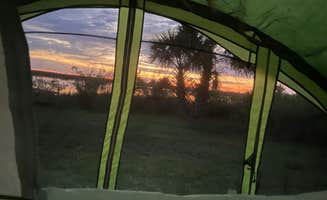Tent camping near Orange Park, Florida offers convenient access to primitive sites within undeveloped forest tracts. Most locations sit within a 30-45 minute drive, with seasonal conditions affecting comfort levels throughout the year. The region's low elevation wetland environments create unique camping opportunities where water access and wildlife viewing become primary attractions.
What to do
Kayaking and fishing access: Princess Place Preserve in Palm Coast features waterfront tent sites where campers can launch directly from their campsite. "You can launch your boat from your site, fish and enjoy. There are creeks meandering all through the preserve for paddleboard and or kayaking," notes one visitor to Princess Place Preserve.
Wildlife viewing: The natural environment supports diverse animal sightings. At Bayard Conservation Area, campers report seeing "many animals including: deer, otter, turkey, and wild pigs" during hikes to their sites. The area's primitive nature allows for uninterrupted wildlife observation.
Trail exploration: Etoniah Creek State Forest offers multiple hiking options including the George's Lake Trail with lake observation deck. "Six Sites have picnic tables, lots of room, fire ring with grate, bbq grills, a latrine nearby. Etonia Creek is a couple miles from camp but a beautiful destination on its own," shares a recent visitor.
What campers like
Water proximity: Many tent sites provide direct water access. One camper at Black Creek Ravine appreciated their site's location, noting "It is about 30 feet through some trees to the river... The downside of that is the occasional boats or jet ski that come flying past, but for us that only happened a small handful of times."
Site privacy: Tent campers consistently mention the separation between sites. At Jennings State Forest Hammock Campground, a visitor observed, "There was only one camper but did not know that until I left the next morning. It was quiet and felt secluded. The sites were close as you would normally get in an established campground but there was plenty of brush to separate each site."
Nighttime solitude: After public areas close, overnight campers gain exclusive access to surrounding natural areas. A camper at Princess Place Preserve noted, "The park doesn't seem like it gets busy in general, but it closes to the public at 6 pm, so that means you basically have the next three hours of daylight to roam the entire place by yourself!"
What you should know
Site preparation: Several tent locations feature elevated platforms for better water management. At Princess Place Preserve, tent sites are "expansive and beautifully shaded" with multiple reviewers noting the water access and breeze conditions at waterfront sites.
Water access limitations: Non-potable water sources require treatment at most locations. A Camp Chowenwaw Park visitor warns, "The water provided is non-potable," making personal water supplies essential for multi-day stays.
Weather considerations: Summer visitors should prepare for daily afternoon showers. As one Cumberland Island camper described, "It rained every day while we were there and past clothing not drying it was still an amazing trip." Elevated sites and proper rain gear become crucial during wetter months.
Wildlife interactions: Raccoons present challenges at most campgrounds. A visitor to Cumberland Island reported, "Raccoons will pry open just about everything!" making proper food storage containers essential equipment at all area tent sites.
Tips for camping with families
Child-friendly amenities: Camp Chowenwaw Park offers unique accommodations appealing to younger campers. "The treehouses are very cool and sleep four people. The camp is an old Girl Scout camp but was then purchased by Clay County. The park has a swimming pool and other places to camp besides the treehouses," notes one visitor.
Swimming access: Pools provide controlled water environments for children. A Camp Chowenwaw visitor warns, "The only downside was the fact that they are very strict at the pool. The children had to do swim tests and wear a necklace denoting which portion of the pool they could be in."
Distance considerations: Several campsites require moderate hiking with gear. One family at Jennings State Forest Mule Landing Campground reported, "To reach Mule Landing Campground, you'll have to first park in the Phillips Branch Crossing parking lot and from there, you'll just want to follow the Dunns Farm Trail, passing the first campground (Dunn Farms) after about 1/3 of a mile in, where you'll need to keep hiking for another mile."
Tips from RVers
Accessibility challenges: Most tent-focused areas have limited RV access. At Jennings State Forest, the roads leading to campsites consist primarily of "soft sand, or grass" trails not suitable for larger vehicles.
Site spacing: Where RVs are permitted, sites provide adequate separation. At Jennings State Forest Hammock Campground, one RVer mentioned, "The sites are all on one loop, but there are trees and bushes separating each one for some privacy."


